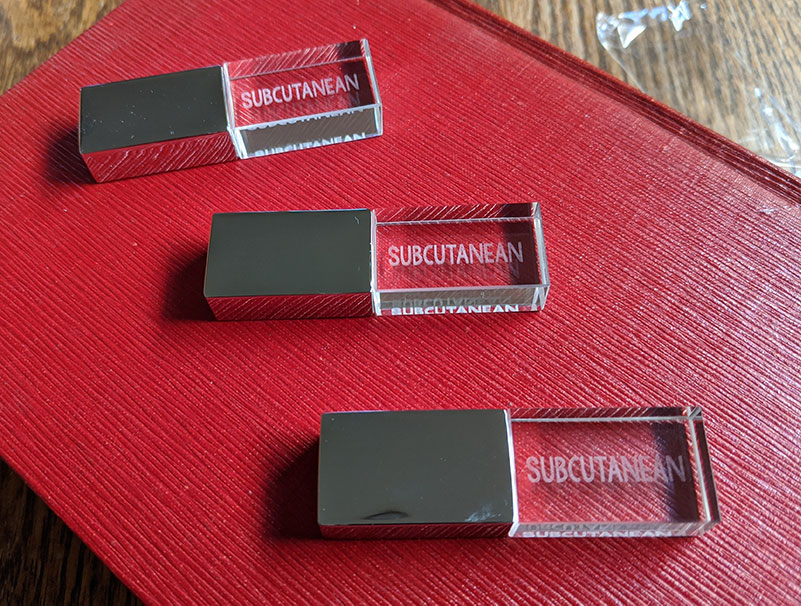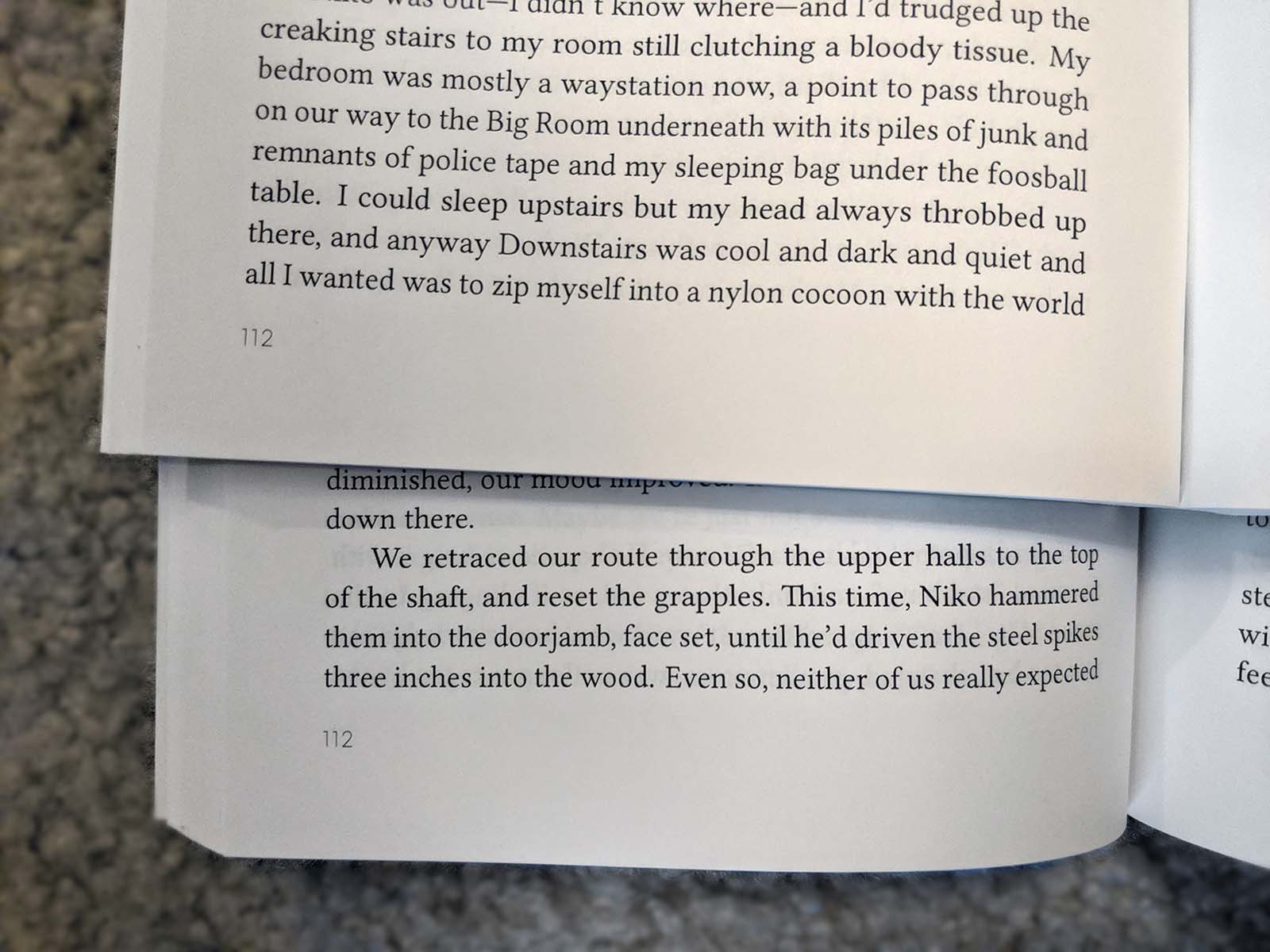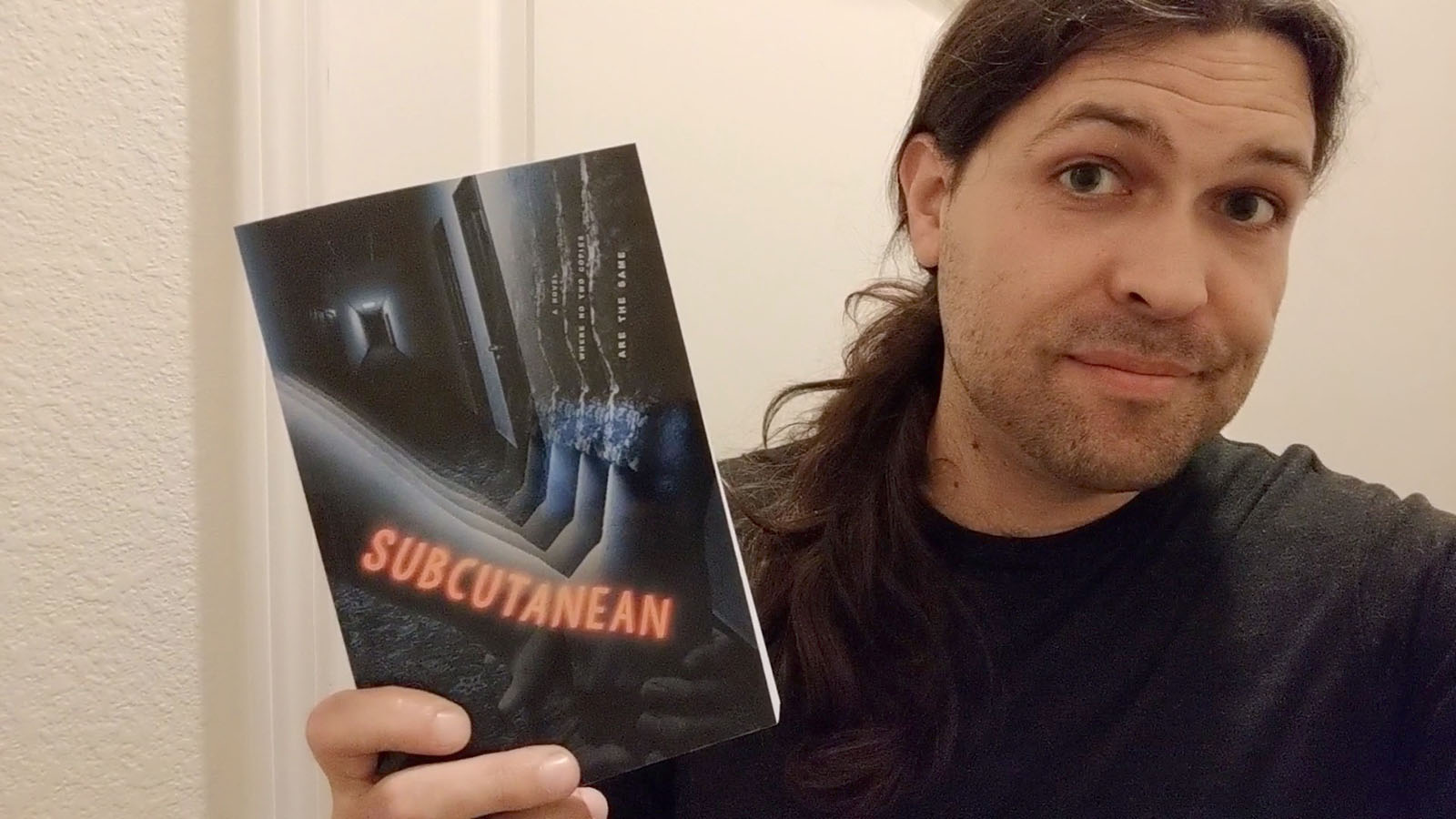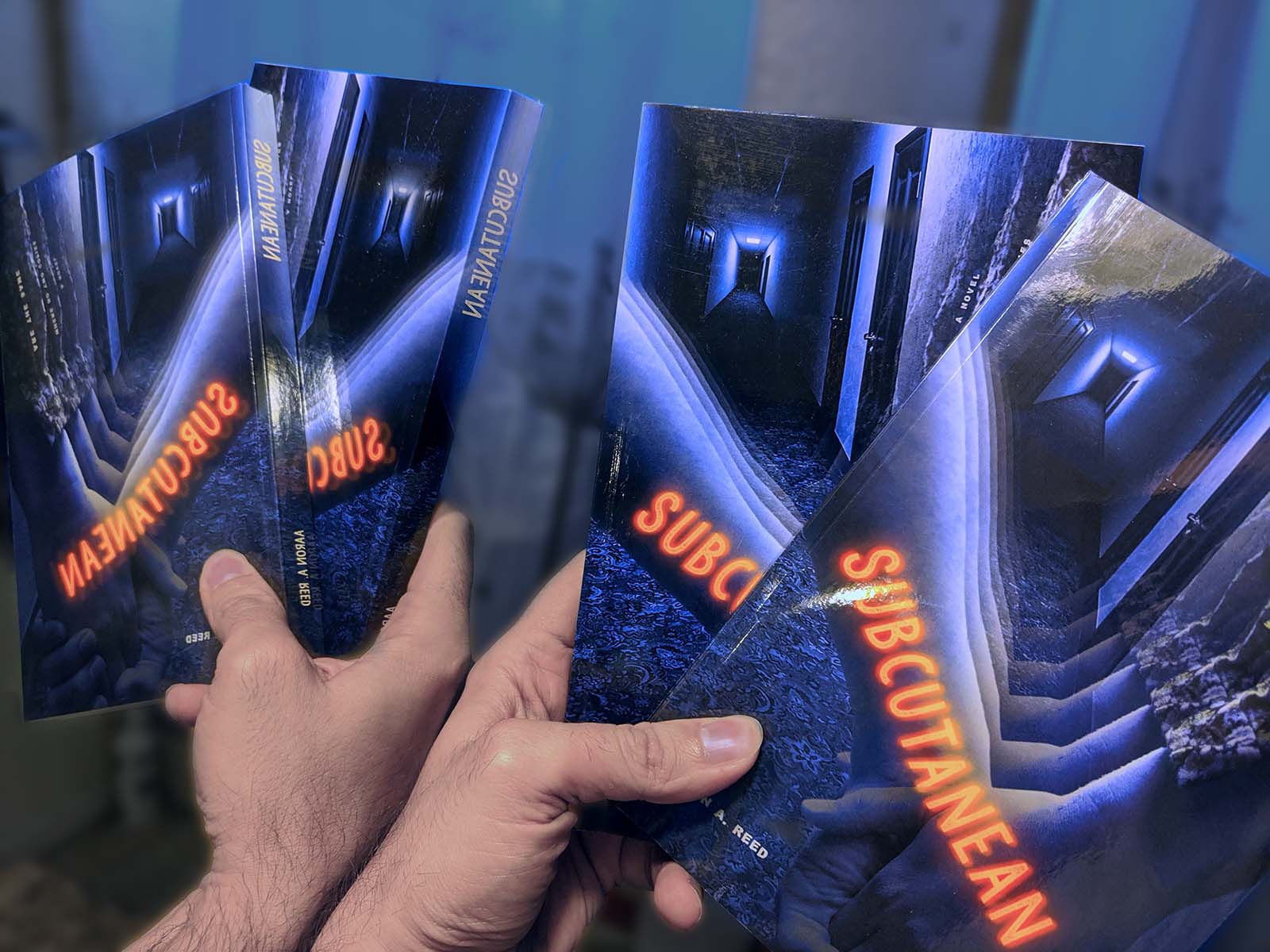
Five years ago (ish), on the palindromic date of 02/02/2020, I released Subcutanean, a procedural horror novel where no two copies were the same. In what now seems a distant past, the generation for the project was entirely hand-crafted, with no LLMs or AIs involved.
One of the exclusive perks for the crowdfunding project was a glass-and-metal USB key which contained 10,000 unique permutations of the novel and a handful of early drafts, behind-the-scenes material, the complete origin text from which all copies were generated, and the generator source code. I promised at the time that this material would be publicly released five years after publication. It's been five years, so: here it is! There's a Github repo with the generator code, and a 1.5GB ZIP archive of the full Subcutanean USB key contents (with some slight updates described below).

(If you're curious about the motivations, design philosophy, and technical workings of Subcutanean, there's a series of design blogs I wrote near the time of release that explain it pretty well. (These may also still be available on Medium but who knows what they're going to start paywalling, so the link is a ZIP archive of PDFs.) The code is more conceptually interesting than technically innovative, although I do think it does what it's supposed to do quite well. A reading and design talk is also available.
Part of the release is 10,000 new permutations of the novel. Why not release the original 10,000? Well, they were first generated in advance of the book's actual release, since I had to get them on the USB keys being sent to backers; so they're missing several rounds of updates to the generator code and improvements to the writing that happened in the immediate aftermath of release (and to a lesser extent, in the years since). In particular, there was a fairly major bug in the original release which could cause the same description of a character's dream to appear in two separate places in a fairly large percentage of copies; and a few other lesser bugs that could make descriptions of scenes or action inconsistent in a way that wasn't my intent.
Each major change to Subcutanean has been marked by incrementing the "generation" of random seeds used to create books, corresponding to the first digit of the seed number fed into the generator. These new copies are Generation 5, starting with seed #50000 and running up to seed #59999 inclusive. You can browse the first thousand of them individually on my website (or download the archive for all of them).

(Which seed should you read? I've picked out three seeds somewhat at random that include a wide range of some of the major possible divergences: 52447, 56019, and 58238, now available for easy web-based or EPUB reading. These should in no way be considered canonical versions: every Subcutanean is equally canonical.)
You can, as before, continue to buy your own unique copies of the novel directly from me, in digital or paperback format. Each of these is generated from a seed that's never been used before and will never be used again, so it's a copy of the novel unique only to you.
The source code, source text and all prior, current, and future renderings of Subcutanean generated from it are now released under a CC-BY-4.0 license, meaning you are free to share, archive, copy, and redistribute the material, even commercially, as long as credit is given to the original author (me, Aaron A. Reed). This means nothing is stopping anyone from selling their own versions or variants. My versions will always be the ones found at the book's official website, subcutanean.textories.com.

Please note that the generator code included in this release has not been cleaned up, modernized, or especially retooled to support use for other projects (although I did try to write it at the time to be at least somewhat reusable). It's written in Python 2 (sorry) and while I hoped to keep it abstracted from Subcutanean specifics at the time of writing, a few project- and OS-specific details did creep in as it neared completion. It's presented mainly for historical curiosity than with the idea of easily adapting it to a new project, but you're of course welcome to try. It does have a lot of unit tests.
Subcutanean has continued to sell in odd bursts and trickles over the years, which I'm pretty proud of for an experimental, self-published indie novel, five years out from publication. What I'm most proud of is that people liked it. An online horror book club gave it an award for "best discussion" provoked by any book they read that year, and an excerpt appeared in the recent book Output: An Anthology of Computer-Generated Text. It's even been assigned in college classes (more than once)! I hope this strange, shifting, personal story continues to find its way to new readers and new permutations.
- Aaron A. Reed

Return to the Subcutanean site